Europe is home to an array of world-leading museums. The Louvre in Paris is the most visited museum on the planet, and attractions elsewhere in Europe, such as the British Museum and Vatican Museums, are regularly listed in the top-ranking museum listings.
Here, we look at the top 20 most visited museums in Europe. The figures are taken from the TEA/AECOM 2023 Theme Index and Museum Index: The Global Attractions Attendance Report. This is presented in partnership with Storyland Studios.

Year on year, attendance at the top 20 EMEA museums is up 21.4% (12.8 million visits) from 2022. The Rijksmuseum in Amsterdam has seen the greatest individual increase in attendance, with a huge 53.1% rise.
The report also finds that the most recent footfall figures evidence the museum sector’s post-pandemic recovery. It notes that visitor numbers for the top 20 museums in the EMEA are now 86.9% of the 2019 published attendance levels – even as some museums continue to cap their attendance numbers to improve the visitor experience.
21.Humboldt Forum, Berlin, Germany – attendance 1,700,000
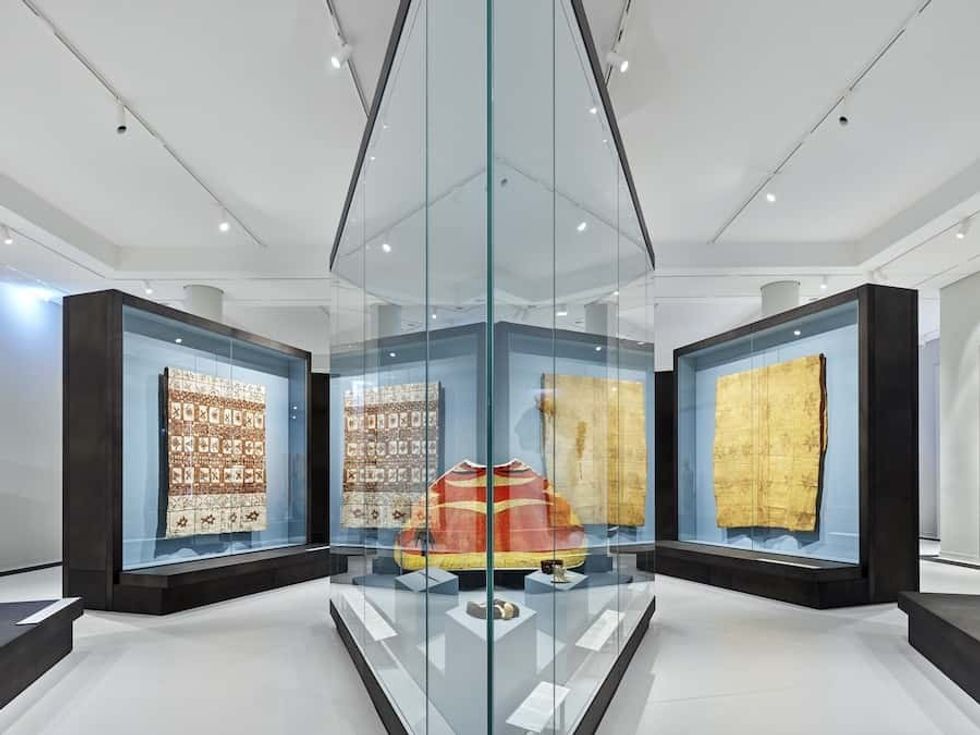
The Humboldt Forum is located in Berlin’s historical centre and shows over 20,000 objects over its 16,000 square metres of gallery space.
The museum opened in two stages, with its west wing opening in 2021, and its east wing following in 2022. Its collections provide an overview of the arts and sciences across time and continents.
In addition to the State Russian Museum and the Acropolis Museum, the Humboldt Forum has entered the TEA/AECOM list for the first time. The reoprt notes that it launched during the peak of Covid and is now beginning to reach its full potential, having already become the most popular art museum in Germany.
Its Ethnology Museum and Museum of Asian Art was designed by Ralph Appelbaum Associates and earned the firm a silver award in the 2022 MUSE Design Awards.
20.Acropolis Museum, Athens, Greece – attendance 1,904,000
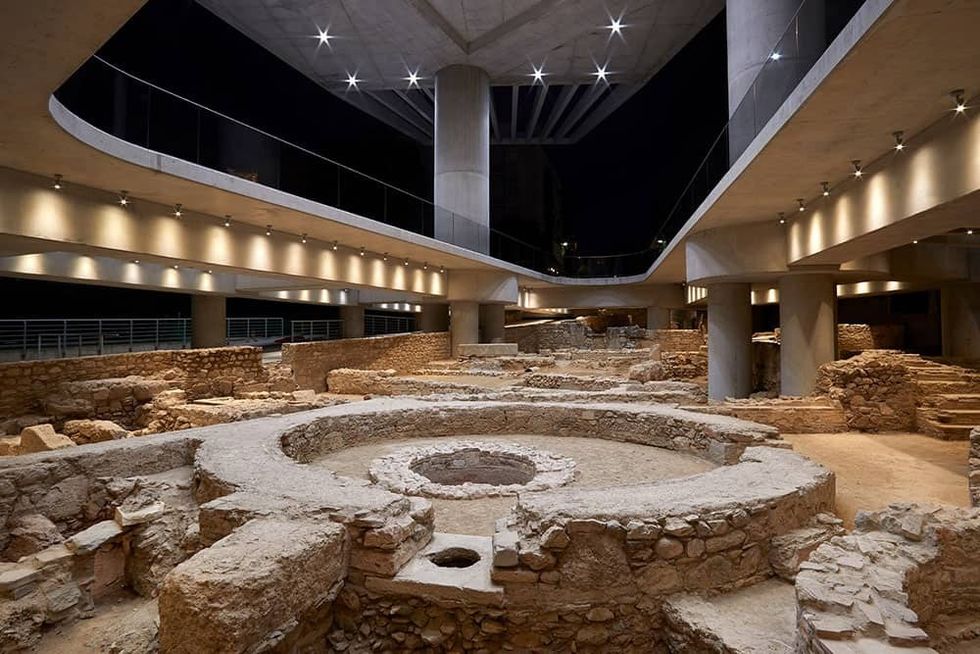
The Acropolis Museum enters the 20 most visited museums in the EMEA for the first time this year, with a 31% rise in visitor numbers over 2022. Athens witnessed a record-breaking year for tourism in 2023, the TEA/AECOM report notes, with international visitors up 10% from their pre-pandemic high.
The museum was built in 2009 tofocuson archaeologicalfinds fromthe Acropolis of Athens and holds more than 4,250 artefacts. It aims to house every artefact discovered on the site and its surroundings, from the Greek Bronze Age to Roman and Byzantine Greece.
The building is situated on the south side of the Acropolis, 300 metres from its monuments, and was designed by Bernard Tschumi and Michael Photiades.
19.State Tretyakov Gallery, Moscow, Russia – attendance 2,100,000
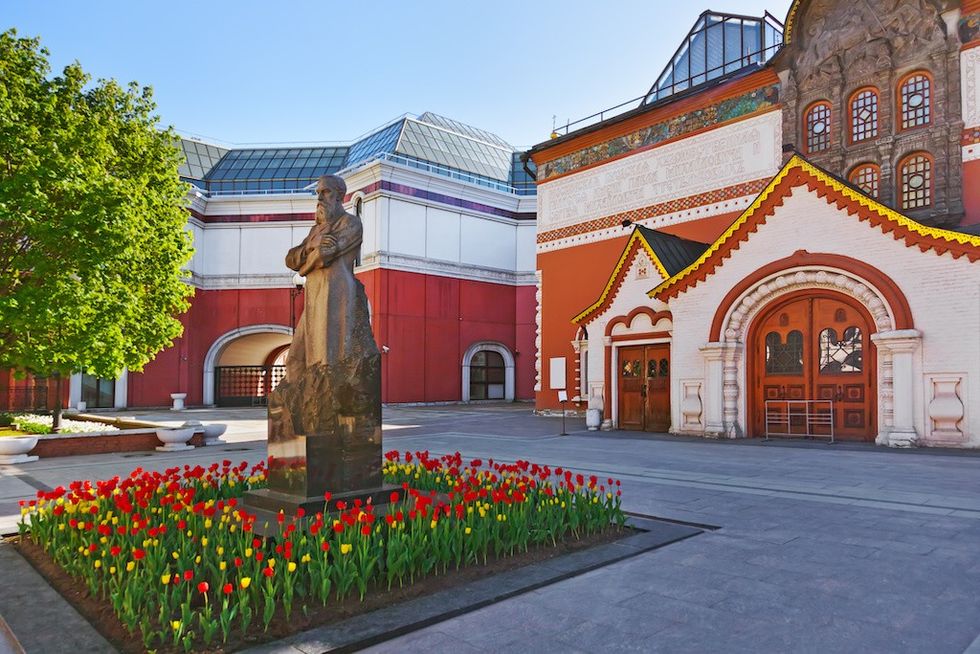
The Tretyakov Gallery is a centre for Russian art which reflects the genre's unique contribution to global culture. The gallery shows 1,300 objects ranging from the 11th to early 20th centuries, and featuring artists such as V.I.Surikov, V.V.Vereshchagin, I.E.Repin, V.A.Serov, and many more.
The gallery's historical building was bought by the philanthropic Tretyakov family in 1851 as their private residence. The collection was started by Pavel Tretyakov, and as his art collection grew, he extended the house to accommodate the works. Following his death in 1898, the house was converted into a public museum.
Today, the museum manages a vast complex of buildings, with 14 different locations and two upcoming branches. It seeks to uphold Pavel Tretyakov’s legacy by enhancing access to Russian art, raising awareness of the significance of the collections, and studying, preserving, and representing the works.
18.National Museum Of Scotland, Edinburgh, UK – attendance 2,187,000
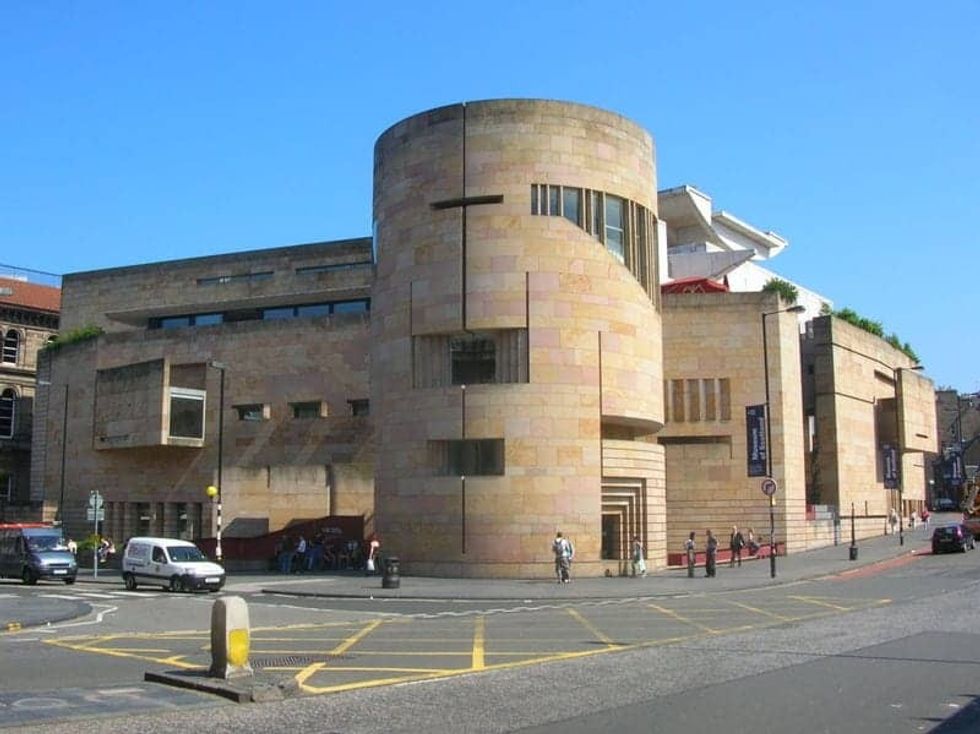
The National Museum of Scotland in Edinburgh marks the first of seven UK institutions to rank in the 20 most visited museums in the EMEA. It was formed in 2006 when the Museum of Scotland, which houses collections of Scottish objects, culture, and history, officially merged with the Royal Scottish Museum, which houses international science and technology collections.
These collections are joined by objects from the former National Museum of Antiquities of Scotland, in an eclectic museum with exhibits that range from thestuffed body ofDolly the sheepto Ancient Egyptian artefacts, one of Elton John’s suits, and the Scottish Maiden, an early version of the guillotine.
In 2022 and 2023, the National Museum of Scotland showed a temporary exhibition called ‘ Doctor Who Worlds of Wonder ’, which explored the science behind the popular BBC TV series.
The educational exhibition, produced by Sarner International, the leading experiential design expert, under license from BBC Studios, featured eight zones of immersive experiences and interactive components. These included a TARDIS Tech room and the Monster Vault, with iconic villains like the Weeping Angels and the Daleks.
17.Cite des Sciences et de L'Industrie, Paris, France – attendance 2,456,000

The Cité des Sciences et de l’Industrie (or City of Science and Industry) is Europe's largest science museum. Permanent exhibitions, on subjects such as the brain, genetics, mathematics, sound, and the history of the cosmos, are joined by a planetarium, a submarine, an IMAX theatre, and zones for children and teenagers.
It also frequently shows temporary exhibitions in collaboration with Universcience, which was founded in 2010 to bring together the Cité des Sciences et de l'Industrie and the Palais de la Découverte in Paris.
Recent exhibitions include the 2021 travelling exhibition Banquet, a multisensory experience exploring the concept of food and feasting, Cancers, which aimed to spark conversations and promote greater awareness and understanding of this disease, and Dance , a travelling exhibition which debuted at the museum and was on show during the 2024 Paris Olympics.
16.Centre Pompidou, Paris, France – attendance 2,622,000
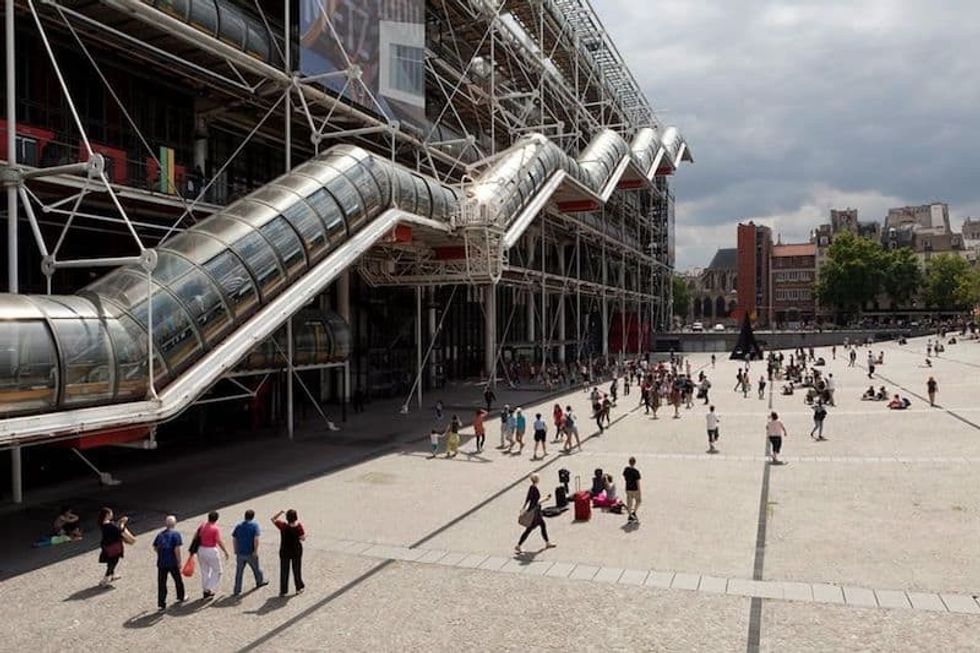
Centre Pompidou was designed by Richard Rogers, Su Rogers, Renzo Piano, and Gianfranco Franchini. The building was completed in 1977 and features an iconic'inside-out' design, with structural, mechanical, and circulation systems visible on the outside.
It has shown numerous important exhibitions featuring a broad spectrum of artists, such as Matisse, Edvard Munch, Alice Neel, David Hockey, Picasso, Francis Bacon, Mona Hatoum, Joan Miró, Sophie Calle, and many others. The Salvador Dalí retrospective in 2013 holds its record for daily attendance. Centre Pompidou also has galleries in Spain, Belgium, and China.
The museum was closed for refurbishment between October 1996 and January 2000. It now intends to close for five years, from summer 2025 to 2030, for a major expansion and refurbishment project.
The renovations will start in 2026. While it is closed, the museum will focus on its new locations,in Brussels, which is set to open in 2025,and New Jersey, set to open in 2026.
In 2025, Centre Pompidou also plans to open a new contemporary art museum in Seoul, South Korea. It has also signed an agreement with Saudi Arabia to open a new contemporary art museum in the kingdom’s AlUla development.
15.Rijksmuseum, Amsterdam, The Netherlands – attendance 2,703,000
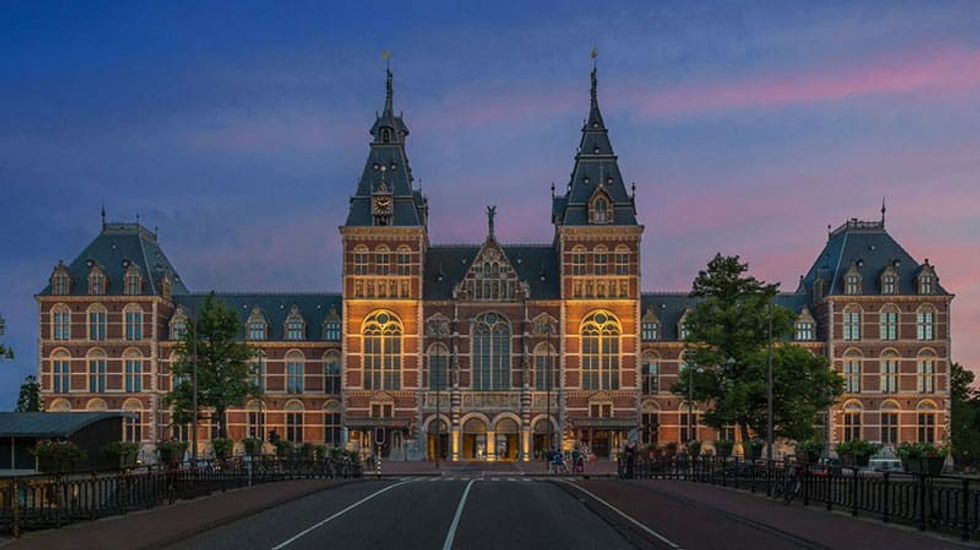
The Rijksmuseum is dedicated to Dutch art and history and can be found on Museum Square, adjacent to the Concertgebouw, the Stedelijk Museum Amsterdam, and the Van Gogh Museum. It is the Netherlands' national art museum and the country's largest museum, with a collection of 1.1 million objects spanning 800 years. Visitors can see works by Rembrandt, Frans Hals, Johannes Vermeer, and many more.
Pierre Cuypers designed the present building, which first opened in 1885. Since 1970, it has been listed as a national heritage site, or rijksmonument. It is accompanied by the Asian pavilion, which opened in 2013, wherethe Rijksmuseum showcases a small Asian collection.
In 2023, the museum broke its record forthe most-visitedshow with its blockbuster Vermeer exhibition, whichwas on show for 16 weeks and welcomed650,000 visitors from 113 countries.
The Rijksmuseum became one of the first museums in the worldto make its collection available online in 2012. In 2019, it announced that it had partnered with Dell Technologies to continue its digitisation project and that by 2023 the entire collection would be available online.
In 2023, the museum announced that it would return six colonial objects from its collection to Sri Lanka, including a looted cannon.
14.Galleria Degli Uffizi, Florence, Italy – attendance 2,718,000
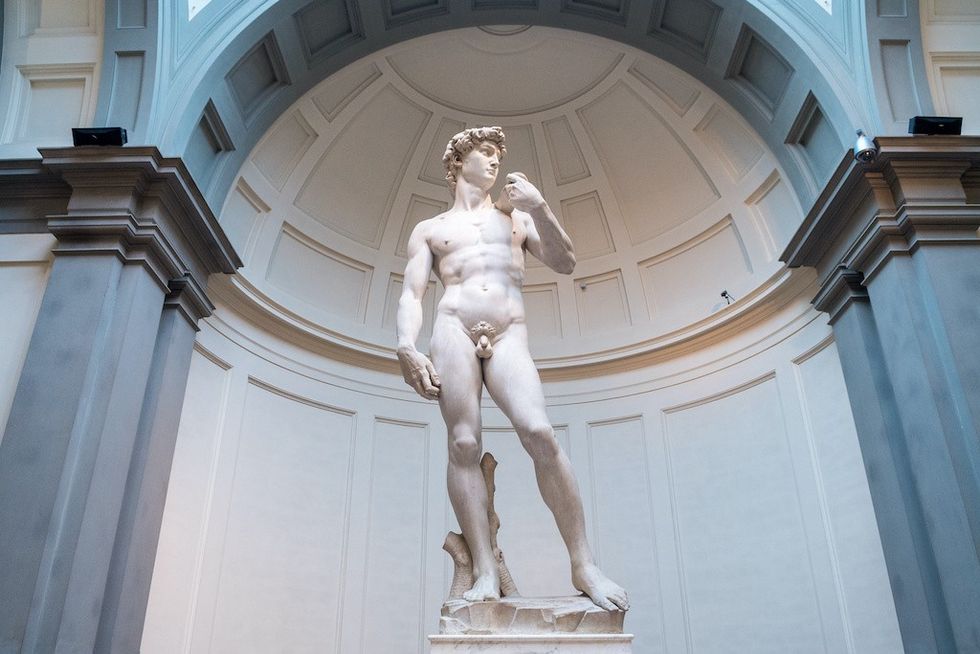
The Uffizi Gallery is one of the best-known museums in the world and is particularly noted for its collection of works from the Italian Renaissance period, featuring Botticelli, Michelangelo, Caravaggio and Leonardo da Vinci, among others.
The museum’s extensive collection also includes works by German, Dutch and Flemish painters, in addition to a collection of sculptures which belonged to the Medici family, including Roman copies of lost Greek works.
The gallery is located in Florence’s historical centre, near Piazza della Signoria, and opened to the public in 1765, yet has been open by request since the 1500s. The Uffizi represents one of the world’s first modern museums.
In recent years, it has been working to attract younger visitors to its galleries.
To connect with a younger audience, the museum joined TikTok in 2020 and started sharing videos of iconic artworks dancing to contemporary music. The campaign doubled its number of young visitors.In 2021, it launched a programme named UffiziKids, whichfeatures a new website, printable worksheets, and the lowering of artwork to children's eye level.
Also that year, the Uffizi launched a weekly series on Facebook called Uffizi da Mangiare (Eat with the Uffizi). For this project, the gallery invited famous chefs and food and drink celebrities to suggest a recipe inspired by artworks in its collection.
13.State Russian Museum, Saint Petersburg, Russia – attendance 2,900,000
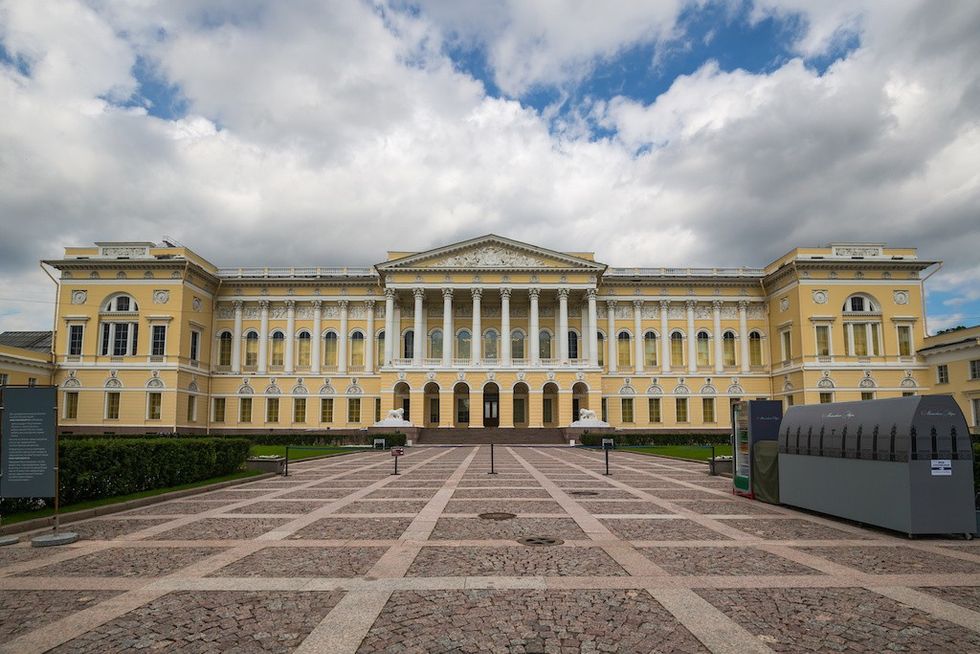
The State Russian Museum is home to 400,000 works which illustrate a thousand years of Russian art history through a wide range of mediums and genres. It was opened in 1896 by Nicholas II in honour of his late father, Alexander III.
Spanning 30 hectares, the State Russian Museum is one of the world’s largest museums. The complex consists of four palaces and spectacular gardens. The Mikhailovsky Palace and Benois wing show the museum's permanent exhibitions, and are accompanied by the Mikhailovsky, Stroganov and Marble Palaces, plus St Michael's (Engineers) Castle, the Mikhailovsky Garden, Engineering Gardens, and Summer Garden (including the Summer Palace), and the Cabin of Peter the Great.
The museum also has a branch in Málaga, Spain.
12.Science Museum (South Kensington), London, UK - attendance 2,957,000
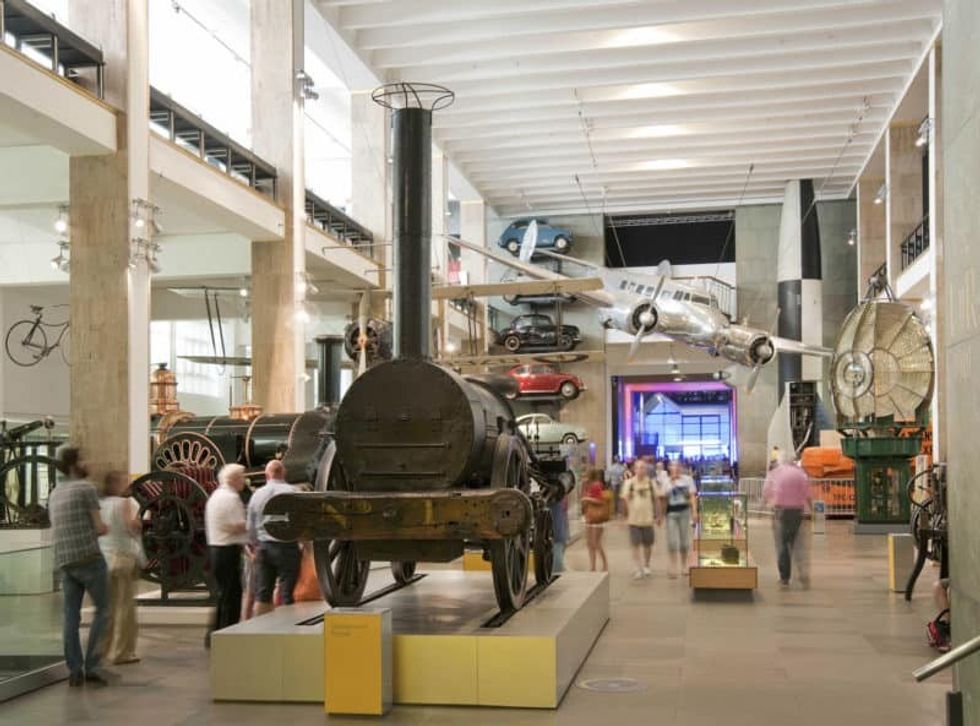
The Science Museum is home to an astonishing array of objects, includingearly steam engines, the first jet engine, the Apollo 10 command module, and the oldest surviving steam locomotive. It also holds an extensive collection of medical equipment with displays that explore historical medical practices from across the world. It is part of the Science Museum Group, which spans six institutions that together care for 7.3 million items.
The museum began construction on the National Collections Centre in Wilshire in 2019. Built to house over 300,00 objects, the centre is the Science Museum Group’s most energy-efficient building to date and home to one of the UK’s biggest solar farms.
In 2023, the museum announced that its popularPower Upexhibition would become a permanent feature, following five successful seasons. The interactive experience allows visitors to get hands-on with video games and consoles spanning five decades.
Energy Revolution: The Adani Green Energy Gallery launched in 2024, and explores how we can limit climate change by using energy more sustainably, featuring historical and contemporary artefacts, new technologies and digital exhibits. The same year, the Science Museum Group signed an agreement with Saudi Arabia ‘s culture ministry to develop a hub for science and culture in Riyadh.
11.National Gallery, London, UK – attendance 3,097,000
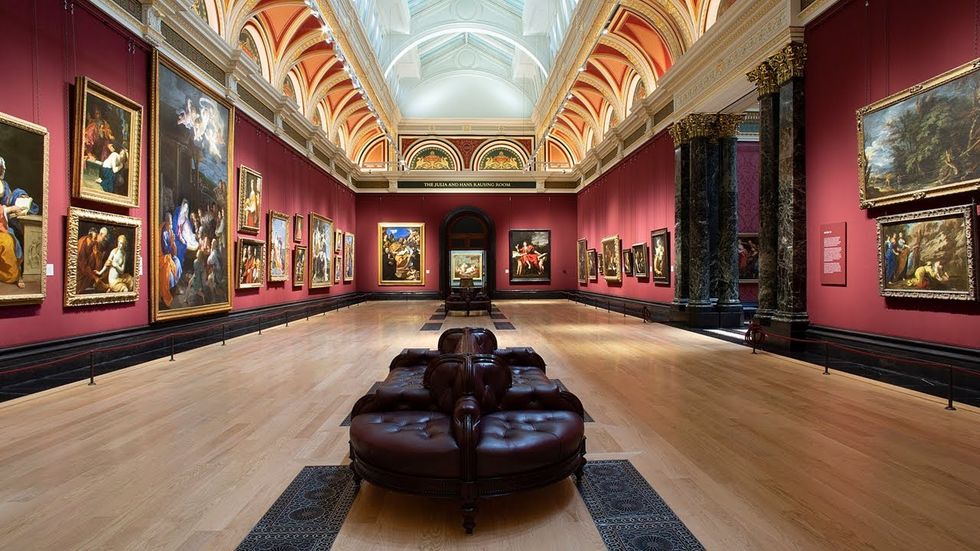
The National Gallery in London is known for its iconic works by artists such as Van Gogh, Caravaggio, Titian and Botticelli. Its collection contains over 2,300 works of art, covering key moments and movements in Western European art from the 13th to the early 20th century.
In 2019,buying and brand licensing director at the National Gallery, Judith Mather, shared its strategy for taking the brand into the Asian market. The museum also announced ambitious new redevelopment plans in 2021, and National Gallery Global’s Julie Molloy spoke further about these plans atblooloop’sFestival of Innovation in 2022.
In 2024, the National Gallery marked its 200th anniversary – which places it as one of the oldest museums and galleries in the world. As part of its celebrations, the museum announced plans to loan its masterpieces to 12 museums and galleries across the UK.
Paul Gray, COO, told blooloop: “We’re taking the word ‘National’ in our title much more seriously. Not everyone can get to London, and we look after these paintings on behalf of you, they’re your paintings.
“We want to share them with everyone in the UK.”
10.Victoria & Albert Museum, London, UK - attendance 3,110,000
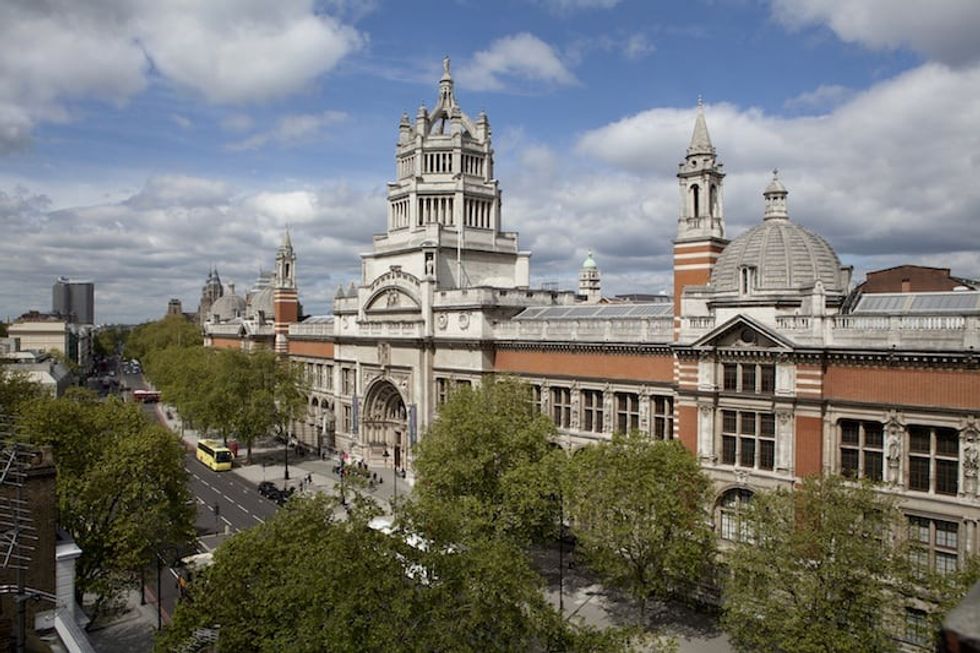
The V&A isone of the most significant museums of art, design, and performance in the world. Ithouses a permanent collection of over 2.3 million pieces spanning more than 5,000 years. Its permanent exhibitions encompass a variety of mediums, such asarchitecture, furniture, fashion, textiles, photography, sculpture, painting, jewellery, glass, ceramics, and book arts.
Recent standout exhibitions include David Bowie is, which broke the museum’s visitor records, Mary Quant, and DIVA.
With the FuturePlan project, the V&A has set out a plan to developnew galleries and amenities, undertakerestoration work on the Kensington venue, and launch V&A East, a new facility in London's Queen Elizabeth Olympic Park in Stratford.This will comprise a new five-storey museum, as well as a new collection and research facility. In 2022, Claire McKeown and Gus Casely-Hayford spoke to blooloop about the plans.
In addition, the transformed London’s Museum of Childhood reopened in 2023 as Young V&A.
9.State Hermitage, St Petersburg, Russia - attendance 3,274,000
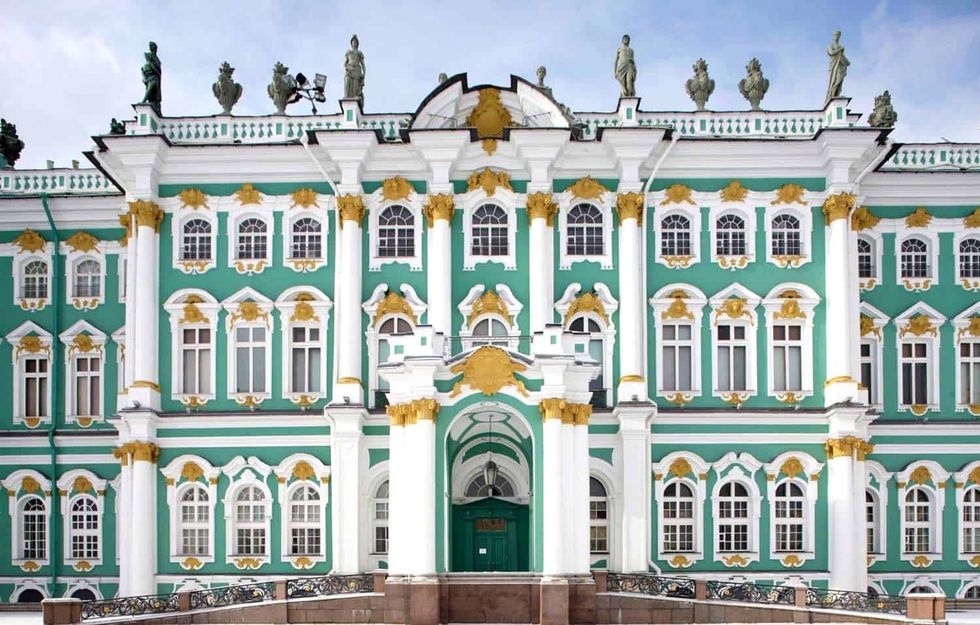
The State Hermitage in St Petersburg was founded in 1764 and opened to visitors in 1852. It is theworld's second-largest art museum and is housed in ahistoric building complex which spansthe Winter Palace, the former residence of Russian emperors, andthe Menshikov Palace.
In 2021, the State Hermitage announced that was making a limited collection of its works available to buy as NFTs to increase its digital reach. The sale included NFTs of works by Leonardo da Vinci, Vincent van Gogh, Giorgione, Wassily Kandinsky, and Claude Monet.
The Amsterdam Hermitage announced that it was ending its partnership with the flagship St Petersburg museum in 2023, cutting ties with Russia following the invasion of Ukraine. The two museums had been collaborating for three decades. The institution has taken a new name, H’Art Museum, and has established new partnerships with leading museums in Europe and the US.
8.Museo Nacional Del Prado, Madrid, Spain - attendance 3,338,000
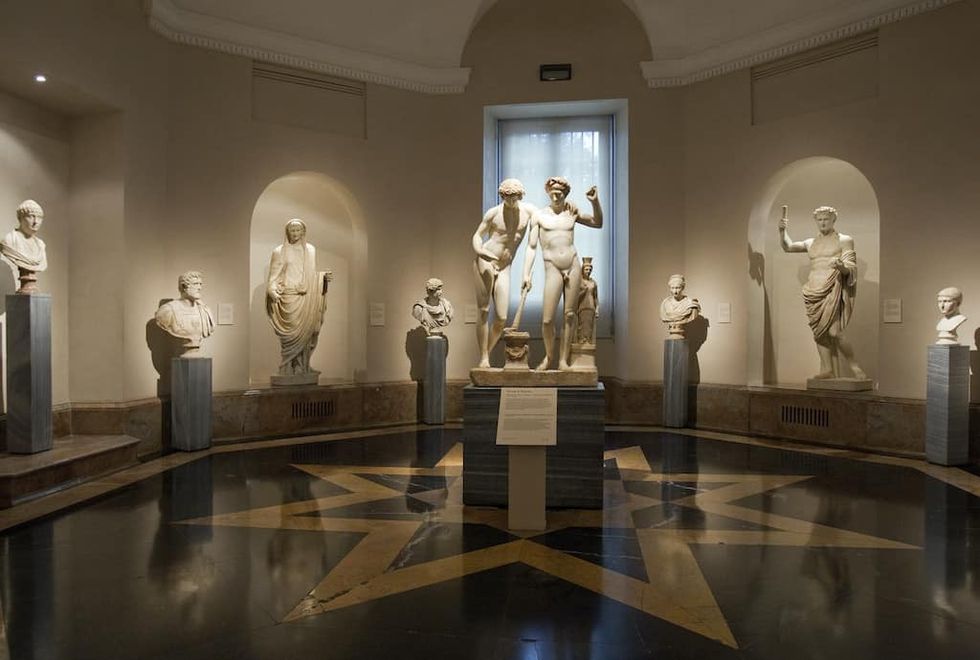
Museo Nacional del Prado, or Prado Museum in Madrid, is home to one of the world’s finest collections of European art, with pieces dating from the 1100s to the early 1900s. It has experienced an increase in visitors of 36% over 2022, “propped up by record-breaking tourism to Madrid in 2023 and a strong exhibit and events program,” notes The Global Attractions Attendance Report.
The gallery was built in 1819 and as Spain’s national art museum. It cares for works by Francisco Goya, Hieronymus Bosch,El Greco,Peter Paul Rubens,Titian, Albrecht Dürer, Raphael and Diego Velázquez.
In 2017, the museum'sdigital content went viral.Peopleacross the world were moved by films ofatmospheric walks that digital communication manager Javier Sainz de los Terreros took through the Prado's empty galleries.
Speaking to blooloop in 2022 about the museum’s digital strategy, he said:
“The kernel of the idea was that it is a privilege for a museum worker to be able to walk through the museum when it’s empty and to be alone in front of the masterpieces. It was a feeling I wanted to share with people, in a way that they would almost be able to smell the place and hear their footsteps echoing. It’s very special, and I wanted them to be able to experience that, and enjoy the paintings so much more, because of it.”
7.Musée d'Orsay, Paris, France – attendance 3,871,000
The Musée d'Orsay is housed in the historic Gare d'Orsay, a Beaux-Arts train station constructed between 1898 and 1900. It is home to the world's biggest collection of Impressionist and post-Impressionist paintings, including works by Monet, Degas, Renoir, Cézanne, Gauguin, and Van Gogh, as well as an array of sculptures, furniture, and photographs.
In 2020, the museum announceda significant expansion project to constructa new wing to display its Impressionist and Post-Impressionist collections. The project is anticipated to be completed by 2026.
Christophe Leribault was appointed director in 2021. He formerly served asdirector of the Petit Palais, curator at the Louvre and director of the Musée Delacroix.
The Musée d'Orsay launchedits inaugural VR experience in 2023 as part of a new Van Gogh exhibition. The museum collaborated with Vive Arts to create the 'La Palette de Van Gogh' experience. This is inspired by Vincent van Gogh's last surviving paint palette, which is in the museum'spermanent collection.
In 2024, the museum loaned Van Gogh’s Portrait Of The Artist (1887) to the National Museum Cardiff. The piece will be on show until 2025 and marks the first exhibition of a self-portrait by the artist in Wales. Also in 2024, the museum worked with Airbnb to offer an exclusive stay in its iconic clock room, which was transformed into a glamorous bedroom by designer Mathieu Lehanneur and overlooked the Olympics opening ceremony.
6.Tate Modern, London, UK - attendance 4,742,000

Tate Modern opened in 2000 in an enormous former power station on the River Thames. The museum shows a world-class collection of contemporary art from 1900 to the present, with works by leading artists Andy Warhol, David Hockney, Roy Lichenstein, Salvador Dalí, Tracy Emin, and the world’s first ultra-realistic humanoid AI robot artist Ai-Da. The iconic, vast Turbine Hall shows a programme of oversized works and installations.
Hilary Knight, director of digital,spoke to blooloop in 2021 about how digital supports the museum’s work. In 2022, Carmel Allen managing director, shared insights into the organisation’s goals and mission.
In 2022, Tate Modern removed a plaque marking the Sackler Escalator and Sackler lifts, joining numerous major institutions in dropping the name amid concerns about the opioid crisis.
Karin Hindsbo, former director of Oslo’s National Museum, was appointed as Tate’s director in 2023. She is the second woman to take on the role.
Image: Infinity Rooms. Tate Modern/Yayoi Kusama
5.Natural History Museum, London, UK - attendance 5,689,000
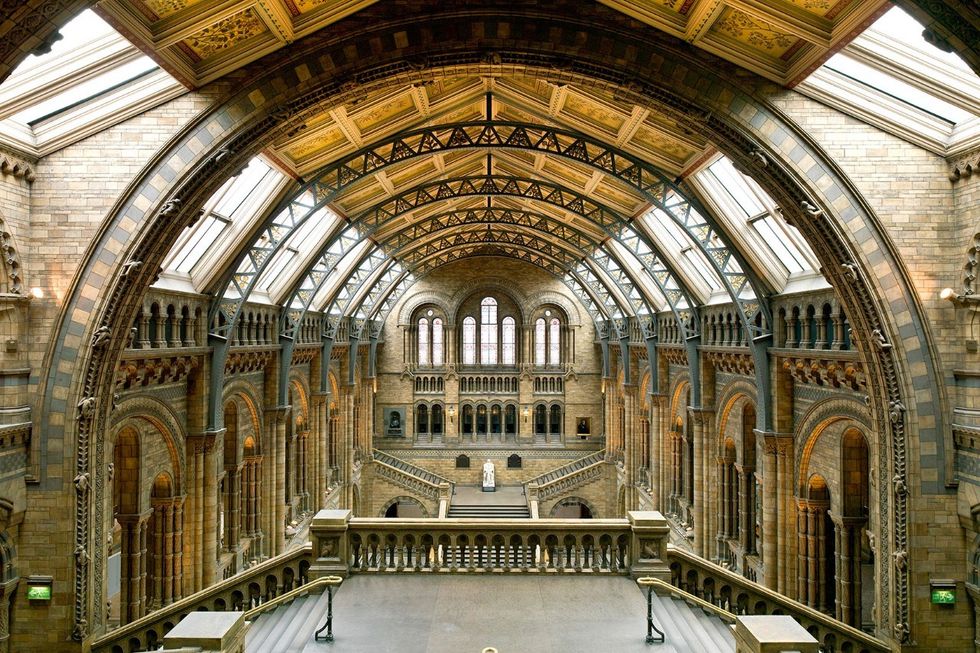
While the Natural History Museum in London is renowned for its dinosaur exhibits, visitors can enjoy displays across five main collections, botany, entomology, minerals, palaeontology, and zoology.
One of the museum’s core objectives is to encourage advocacy for the planet. As such, it is one of several museums that have declared a planetary emergency. It attended COP26 and COP28, where its team engaged in vital discussions about the biodiversity loss, nature-based solutions, and the importance of data.
In 2019, its Urban Nature Project received support from the National Lottery Heritage Fund, and the Natural History Museum ’s transformed gardens launched in July 2024. The five-acre green space consists of two living galleries – the Nature Discovery Garden and the Evolution Garden and features a new bronze diplodocus named Fern.
Also in 2024, the Natural History Museum was announced as the lead for a new £155 million, 10-year programme to digitise the UK’s natural science collections. The project, named DiSSCo UK, will digitise specimens from approximately 90 museums. The UK’s natural science collections include more than 137 million items, with 80 million of these cared for by the Natural History Museum.
4.British Museum, London, UK - attendance 5,821,000
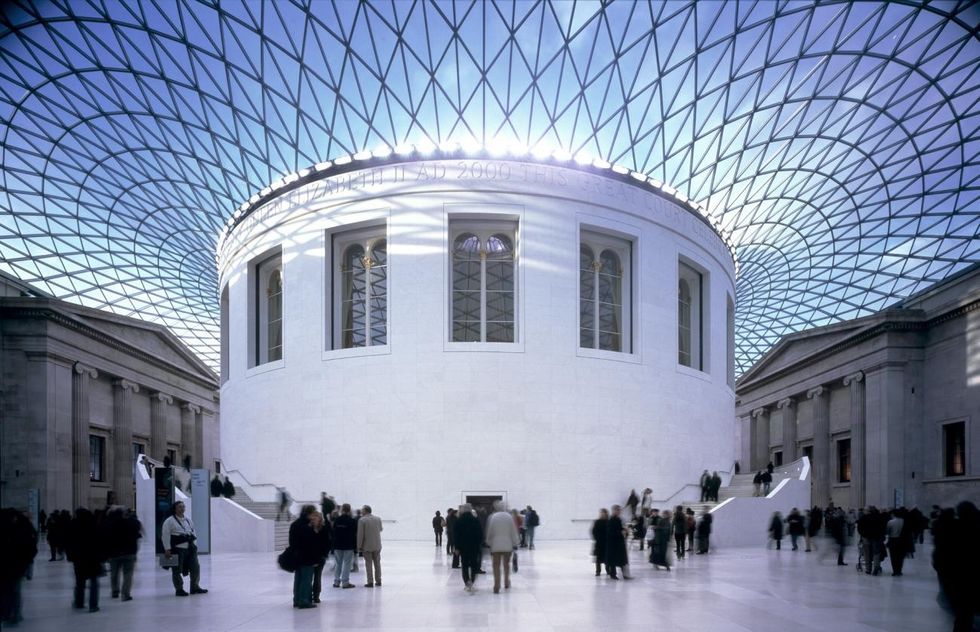
The British Museum in London was the world's first public national museum and is dedicated to history, art, and culture. It holds around 8 million objects.
The British Museum hascollaborated with Samsung to reopen the Samsung Digital Discovery Centre (SDDC) and develop a digital learning programme for young people. The two organisations havealso engaged thousands ofschoolchildren across the UK under the 'Virtual Visits' programme.
In 2021, blooloop spoke with Amanda Mayne, international engagement manager at the British Museum, who shared insights on touring exhibitions, the pandemic's lessons, and the value of international collaborations.
The British Museum removedthe Sackler name from galleries and rooms sponsoredby the family in March 2022.
Following the alleged theft of approximately 2,000 items in 2023, the British Museum announced plans to digitise its entire collection to improve public access and security.
The museum announced the appointment of Nicholas Cullinan as its new director in 2024. Cullinan was previously Director of the National Portrait Gallery and will serve alongside a board which includes Tracey Emin, George Osbourne, and Mary Beard, among others.
In 2024 TheBritish Museumalso launched an international competition to find an architectural team to transform over a third of its gallery space. The project will reimagine the western side of the museum, which houses collections from ancient Egypt, Greece, Rome, Assyria and the Middle East. The museum has agreed to a controversial 10-year, £50 million deal with energy giant BP to help fund renovation.
3.Vatican Museums, Vatican, Vatican City – attendance 6,765,000
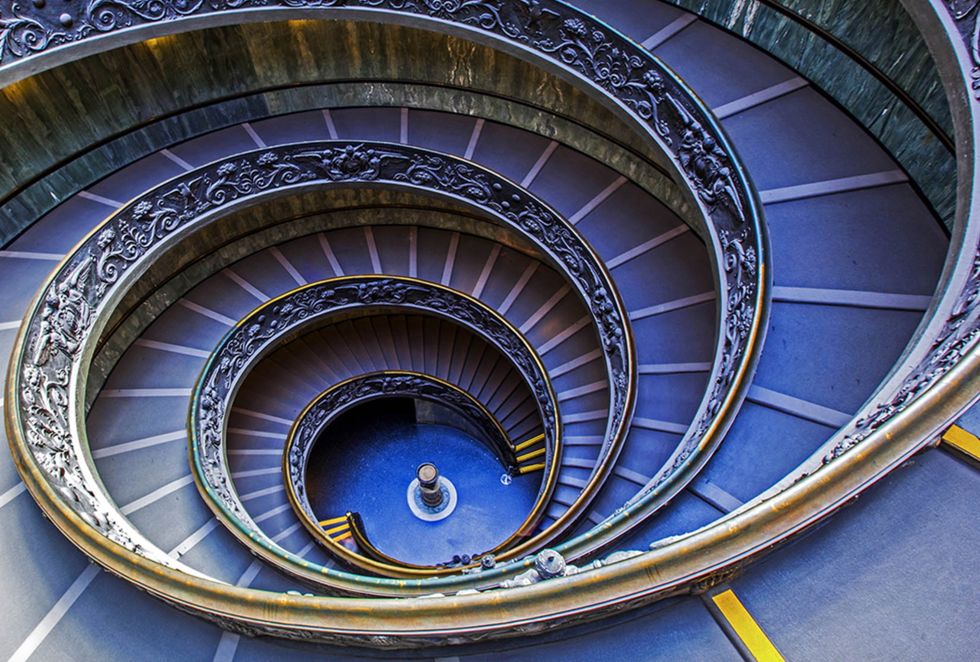
Vatican Museums show some 70,000 works from the Catholic Church’s collection, which ranges from Roman sculptures to Renaissance art, and Michelangelo’s Sistine Chapel.
In 2023, the Vatican Museums returned three fragments of the 2,500-year-old Parthenon marbles to Greece following an announcement by Pope Francis. The fragments include a head of a horse, a head of a boy and a bearded male head. They had been in the Vatican’s collection since the 1800s.
The Greek Ministry of Culture and Sports described the decision as "generous" and expressed hope that it would put pressure on the British Museum to return the Parthenon marbles.
Vatican Museums partnered with Emission House Manuscriptum in Poland, LIVE Agency, Scripta Maneant in Italy, and ARAM company in 2024 to bring the Sistine Chapel to Poland. The project created an engaging multimedia exhibition using Panasonic projectors and innovative new technology.
2.Louvre, Paris, France - attendance 8,860,000
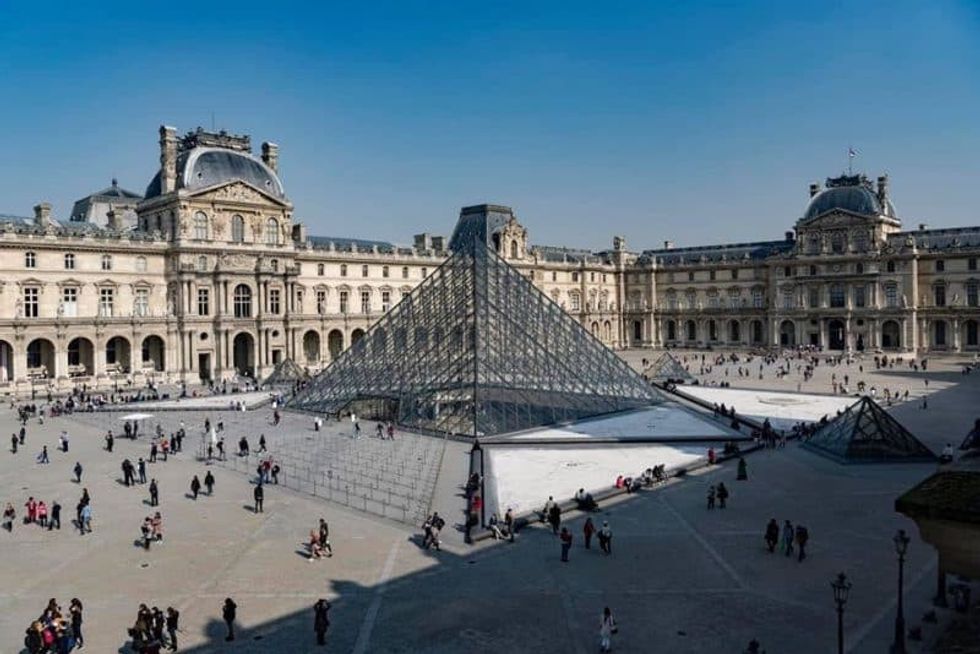
It's no surprise that this iconic institution tops the list of most visited museums in EMEA.
The Louvre boasts a world-class collection, with the Mona Lisa and the Venus de Milo among its 380,000 objects. But is also a world-class landmark in its own right with its distinctive pyramid by Chinese-American architect I. M. Pei.
Due to the museum’s immense popularity, the Louvre has established processes to enable daily attendance caps to be put in place, resulting in a less crowded and more pleasant experience.
Online booking was implemented before COVID-19 and is still greatly encouraged – especially during the busy summer season.After attracting 7.8 million visitors in 2022, in early 2023 the Louvre revealed plans to limit daily attendance to 30,000 to improve the visitor experience. Later thatyear, it announced plans to raise its entrance price for the first time since 2017, with an increase of29% set for2024.
Meanwhile, the museum announced in a press release that more than 3.6 million people visited the museum for free during 2023. The majority of these visitors were from the surrounding region.
Laurence des Cars, president and director of the Louvre, said: “I am happy and proud to see the French public, from Ile-de-France and Paris, reclaiming the Louvre museum”.









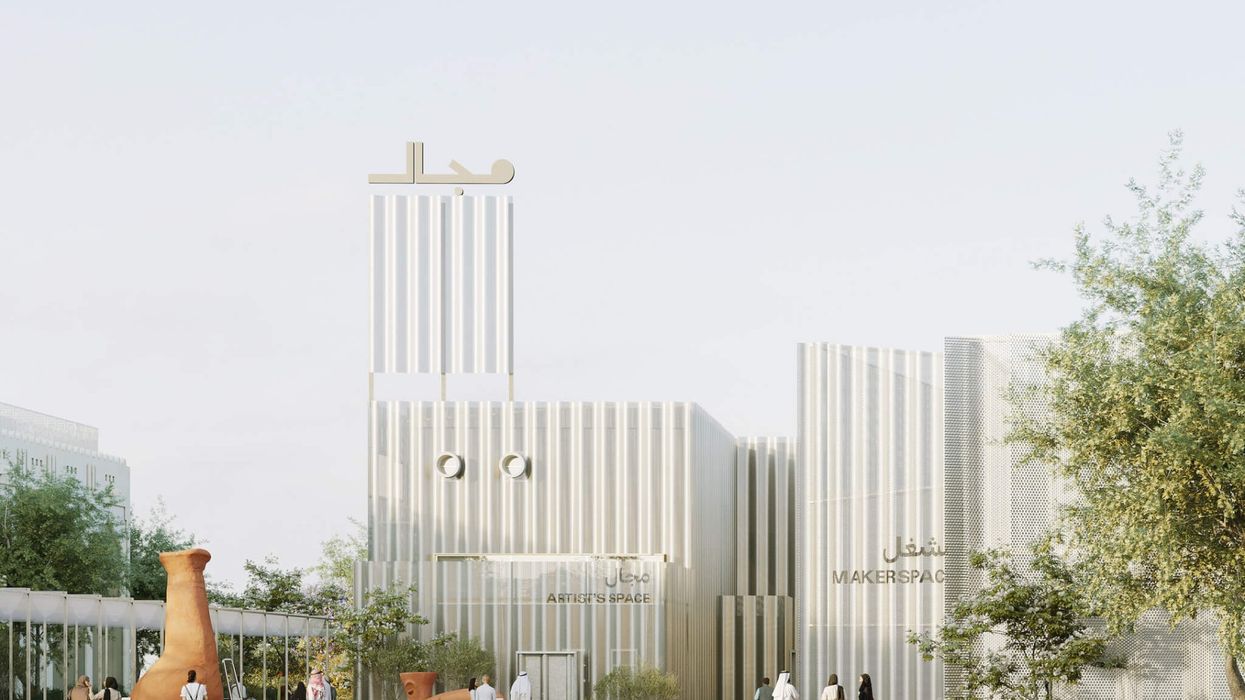

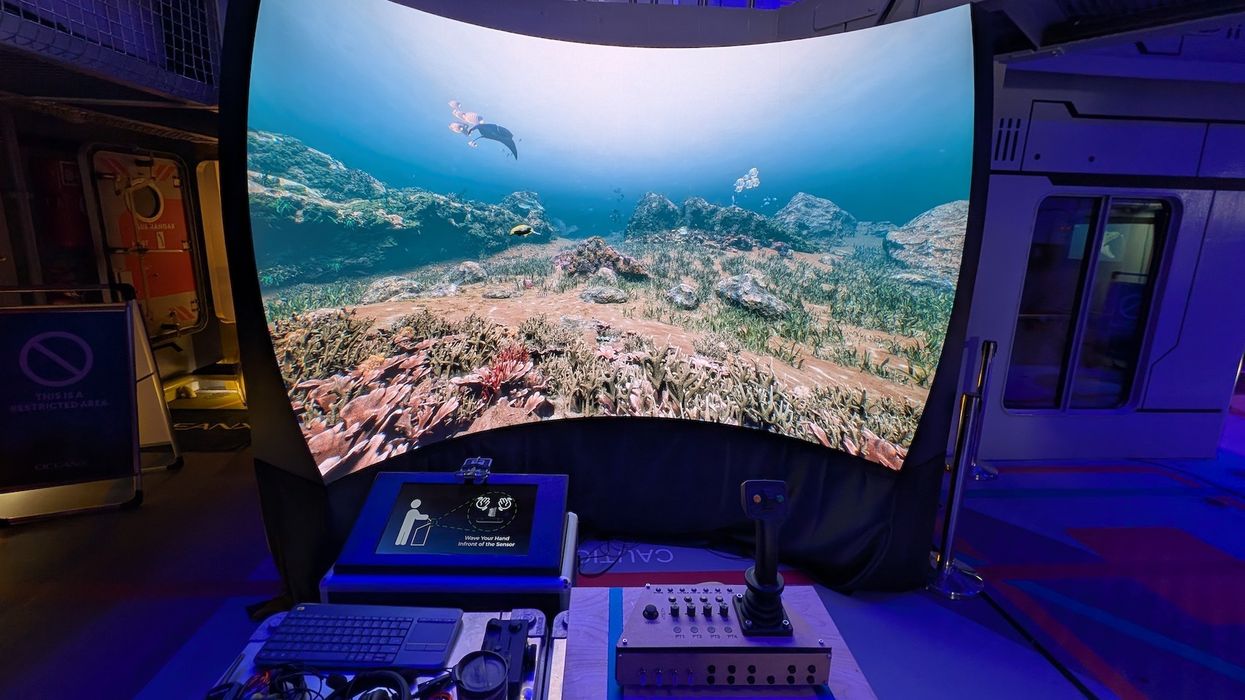
 TM Lim and Adam Wales
TM Lim and Adam Wales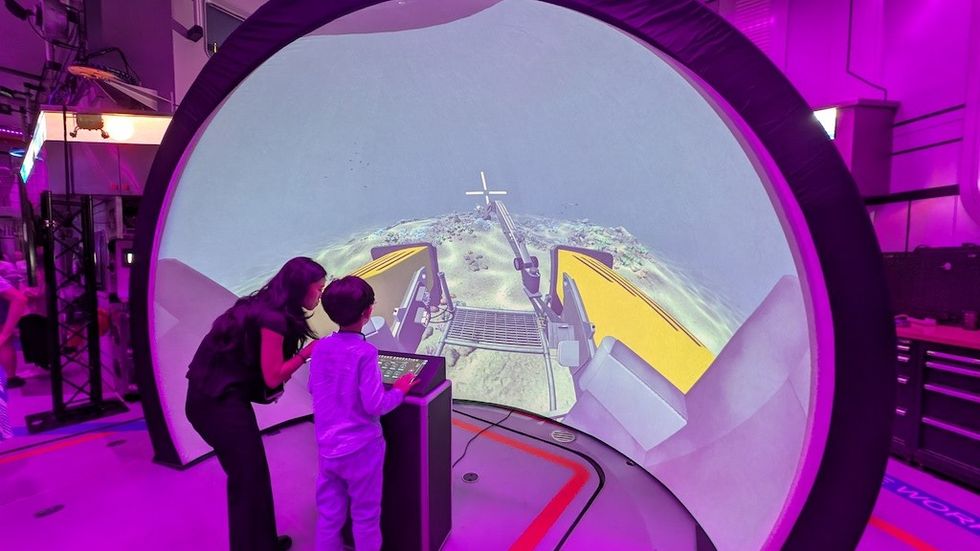
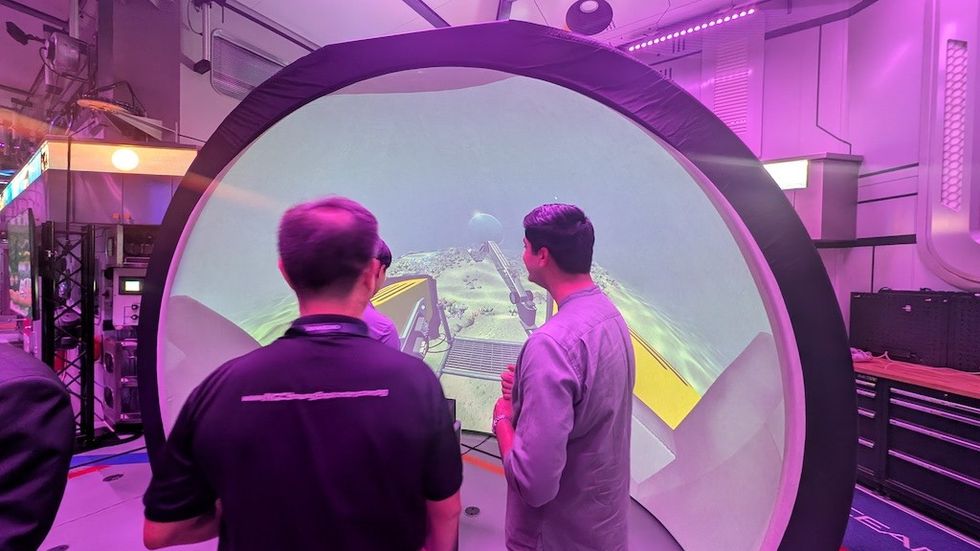

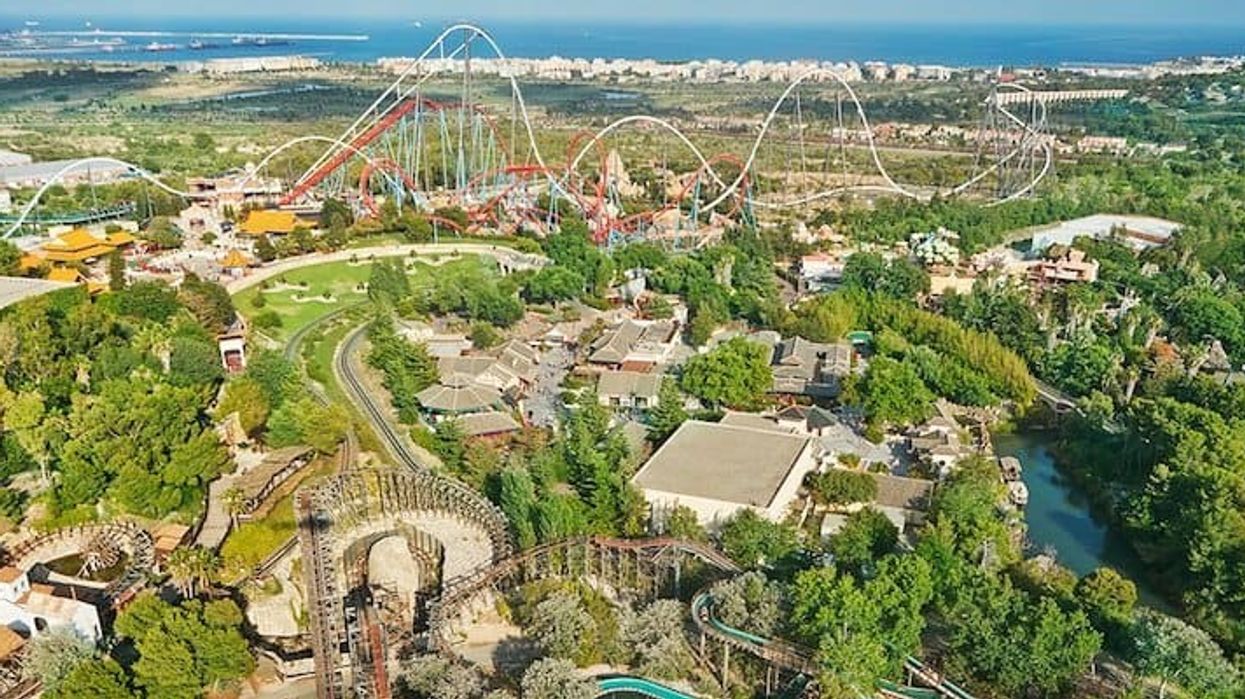
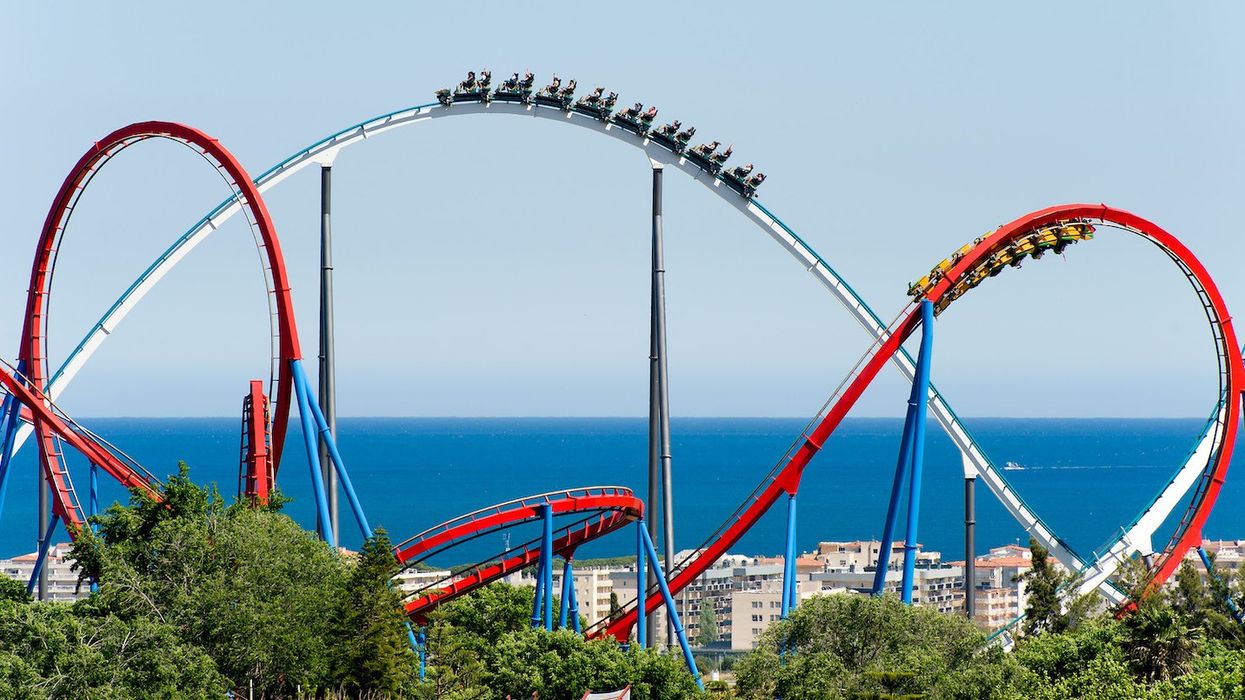



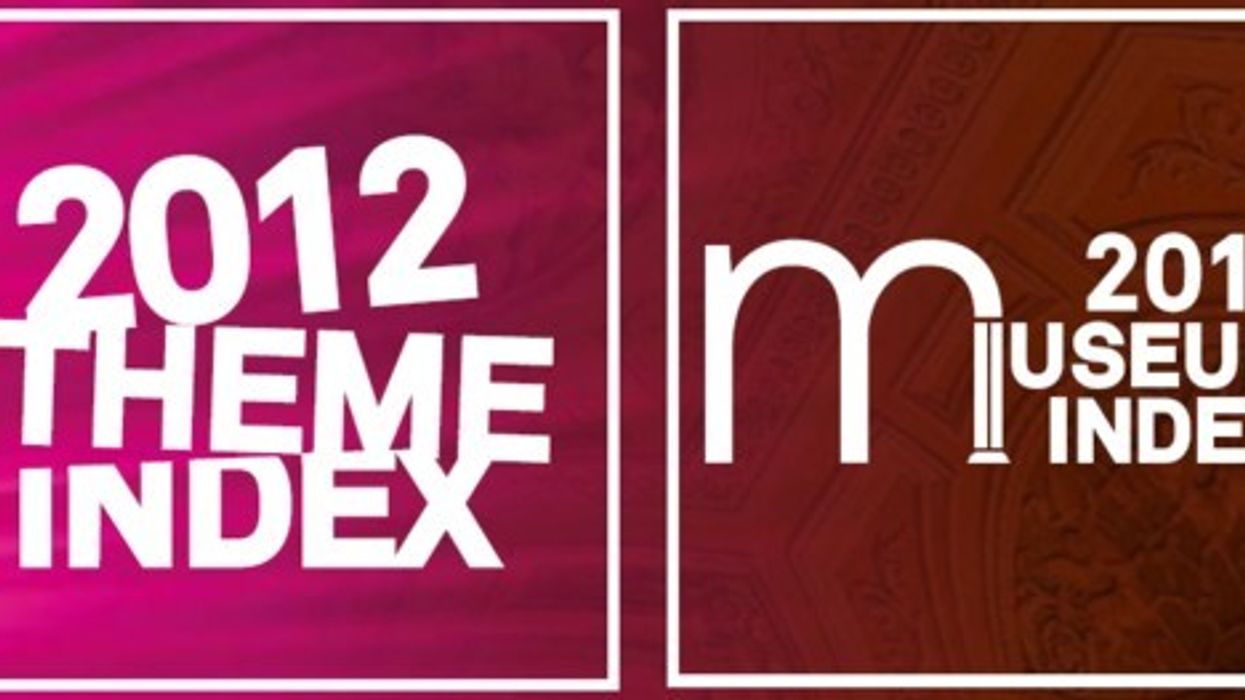

 Toby Harris
Toby Harris Hijingo
Hijingo Flight Club, Washington D.C.
Flight Club, Washington D.C.
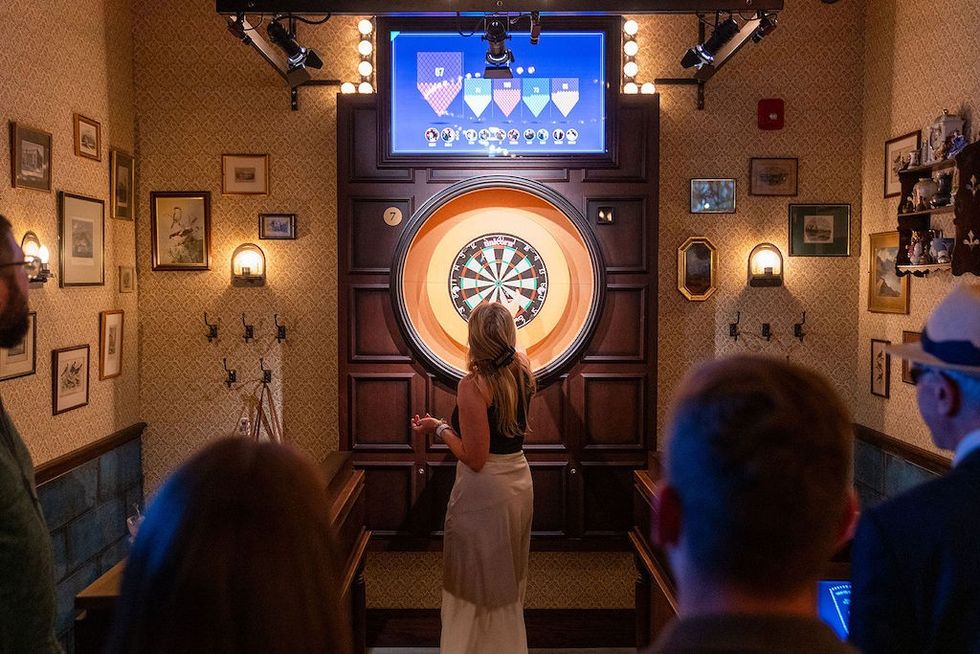 Flight Club Philadelphia
Flight Club Philadelphia Flight Club Philadelphia
Flight Club Philadelphia Bounce
Bounce Hijingo
Hijingo Bounce
Bounce
 Fernando Eiroa
Fernando Eiroa
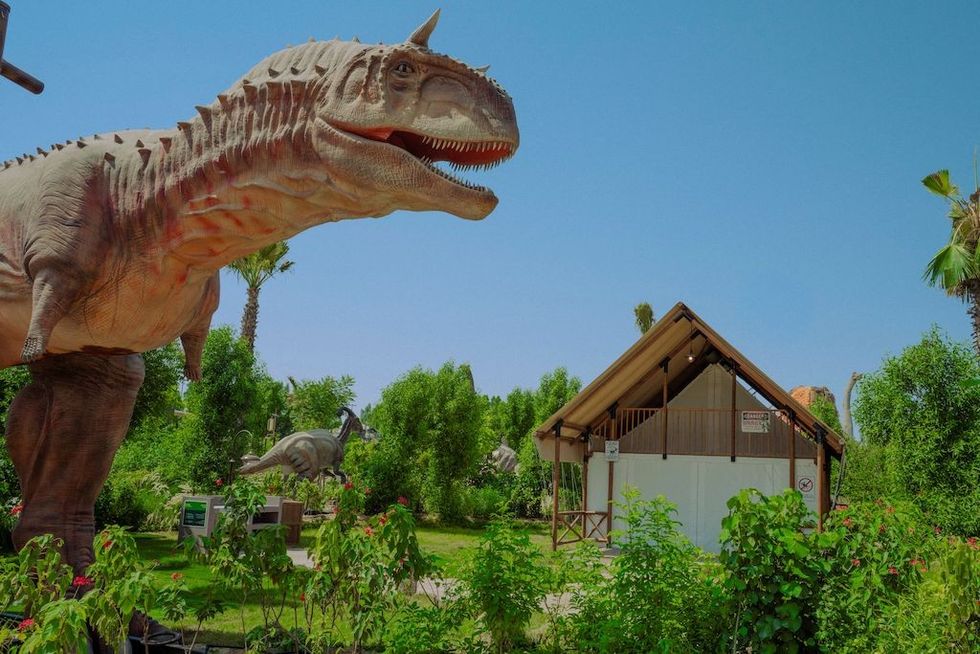









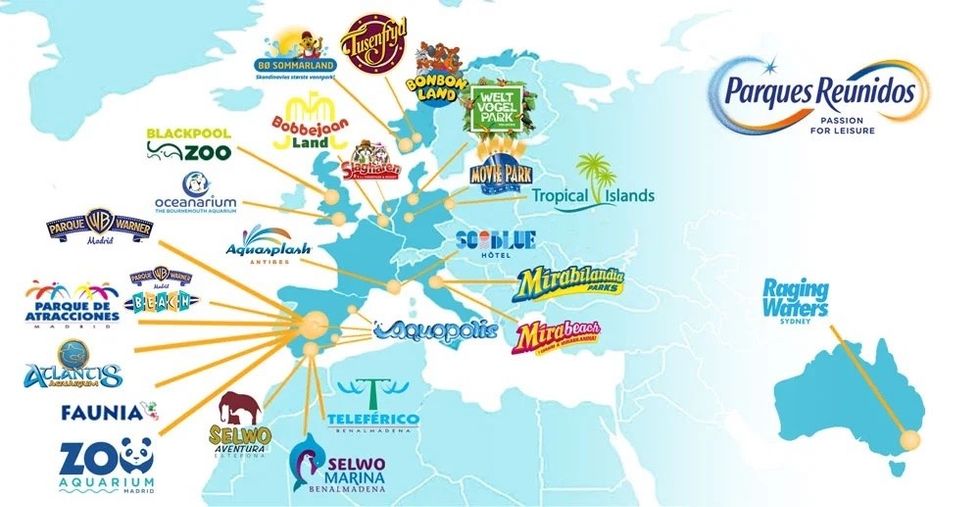
 Nickelodeon Land at Parque de Atracciones de Madrid
Nickelodeon Land at Parque de Atracciones de Madrid Raging Waters
Raging Waters  Mirabilandia's iSpeed coaster
Mirabilandia's iSpeed coaster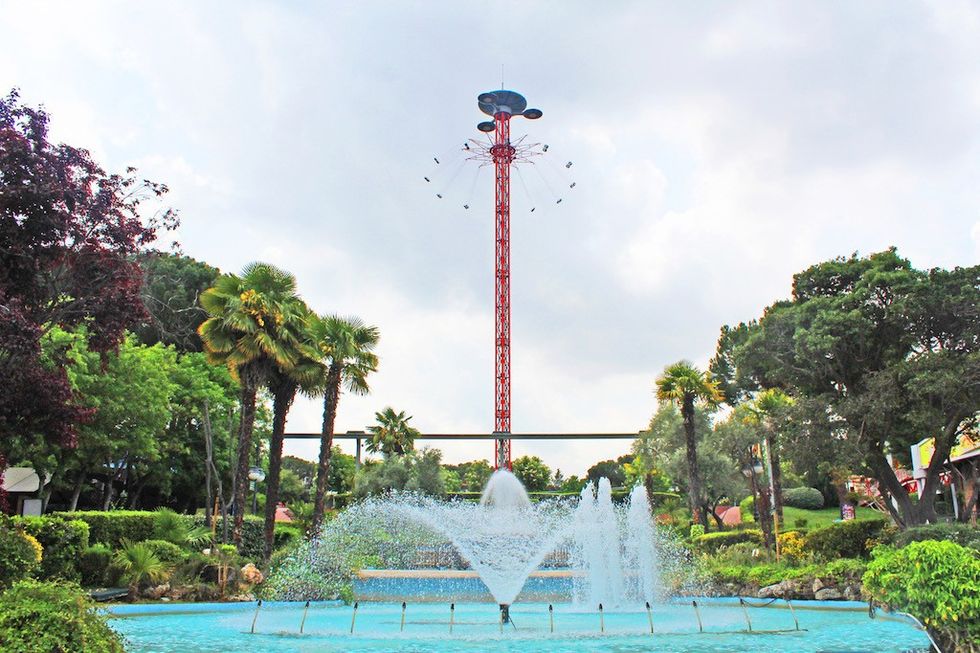 Parque de Atracciones de Madrid
Parque de Atracciones de Madrid Ferracci at the ribbon-cutting ceremony for Nickelodeon Land at Mirabilandia, with (left) Marie Marks, senior VP of global experiences for Paramount and (cutting the ribbon) Sabrina Mangina, GM at Mirabilandia
Ferracci at the ribbon-cutting ceremony for Nickelodeon Land at Mirabilandia, with (left) Marie Marks, senior VP of global experiences for Paramount and (cutting the ribbon) Sabrina Mangina, GM at Mirabilandia Tropical Islands OHANA hotel
Tropical Islands OHANA hotel Elephants at Blackpool Zoo
Elephants at Blackpool Zoo  Tusenfryd
Tusenfryd
 Andrew Thomas, Jason Aldous and Rik Athorne
Andrew Thomas, Jason Aldous and Rik Athorne







